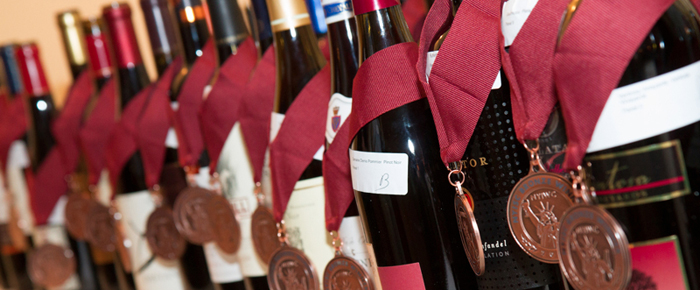
By Rick Riozza
Each year since 1988, Wine Spectator has released its Top 100 list, where their editors select the most exciting wines from the thousands they reviewed during the course of the year. They write, “These wines are a diverse group—ranging from emerging labels and regions to traditional estates exploring new directions—and all generate the excitement we call the “X-factor.”
In addition, their selection also prioritizes quality, value, and availability. These criteria are applied to the wines that rated outstanding (90 points or higher on Wine Spectator’s 100-point scale) each year to determine the Top 100. They add, “This is not a ‘shopping list’, but rather a guide to wineries to watch in the future—a reflection of the producers and wines our editors become particularly passionate about in each new year.”
The really nice thing about this year’s selection is the variety of varietals. #1 and #7 are California Cabs and Cab blends, with #2 and #3 Oregon Pinot Noirs; it would be a fun speculation to imagine if the voting editors were European. Ultimately, when all is said and done—it’s really an agreed combination of learned subjective opinions. The rest of the top ten line-up are interestingly different. Some perhaps, you may not know about, so let’s talk about them. (The descriptions in quotes are Wine Spectator’s.)
Of course we should comment on the #1 wine which is the Lewis Cab Sauv Napa Valle, $90. The Lewis wines are always very big on fruit, flavor and body. It exemplifies those enthusiasts that enjoy the full-throttle cab energy of the grape. “Remarkably, this Lewis is elegant and refined for a wine of this size and depth, with tiers of plum, blackberry and currant flavors, as well as subtle touches of black licorice that remain pure and graceful on the long, lingering aftertaste.”
#4 Château Climens Barsac–For the longest time, I’ve been clamoring for you wine enthusiasts who’ve yet to enjoy a Sauternes, to at least try it once. Barsac is its neighbor and also produces that sweet nectar of a wine from shriveled grapes that have become “rotten” due to a sporal fungus. The desiccated grapes provide great concentration of sugars, acids, and extract which ultimately go on to make a one-of-a-kind wine.
“There’s loads here, with apricot, nectarine and clementine flavors stitched with a racy orange zest note to give energy, while tropical papaya and mango flavors add a sublimely creamy edge. The finish sails on and on, coating the palate with a porcelain feel, while an echo of bitter almond lingers effortlessly, like a lace curtain hanging on an endless breeze. Stunning.”
#5 Produttori del Barbaresco, Asili Riserva—This wine is made from the grand Nebbiolo grape. Barolo, produced from the same grape, is sort of Barbaresco’s bigger and older brother. Barolo was produced for aristocratic and upper class circles; Barbaresco didn’t get the attention and inspiration it deserved. Fortunately times are a-changing.
“Intense aromas of cherry, rose, licorice and tar pick up tobacco, spice and mineral elements on the palate. Concentrated, yet elegant and expressive, with more to give. Ends with a long aftertaste of fruit, underbrush and mineral.”
#6 Orin Swift Machete. This is another wine from the now enfant terrible, David Phinney, who can certainly make a hell of a wine with everything going on—most importantly, a great balance of fruit and acidity. “Here, generous and expressive, big and brawny, the wine offers a mouthful of tannins but also brims with flavors and aromas, including Earl Grey tea, dark chocolate, dried violet and toasted gingerbread. Rich notes of plum and black cherry are balanced by forest floor and earth accents, which linger on the long finish.” It’s a blend of Petite Sirah, Syrah and Grenache.
#7 Ridge Monte Bello Santa Cruz Mountains—Stanford Professor and famed Vintner Paul Draper has been producing this wonderful Cab for the last 50 years! He is now retiring; a great California wine history career.
“A beautifully structured wine, with firm acidity and tannins that show grip and grit amid a core of dense, tense currant and blackberry fruit, turning juicy. Those seeking classic old-school Cabernet will embrace this. Cellaring for five to seven years is the right approach. Cabernet Sauvignon, Merlot, Cabernet Franc and Petit Verdot.”
#8 Antinori Toscana Tignanello—This is what a Super-Tuscan wine is all about.
“Aromas of graphite, smoke and tobacco introduce the cherry flavor in this expressive, focused red. Firm tannins and lively acidity balance the fruit and purity, while herbal, spice and mineral elements all gather steam as this plays out on the long finish. Sangiovese, Cabernet Sauvignon and Cabernet Franc.”
#9 Chateau Smith-Haut-Lafitte Pessac Leognan—A white Bordeaux. “This has a gorgeous feel, with opulent fruit offset by racy herb notes and acidity, showing lemon sherbet, shortbread and white peach flavors backed by a salted butter– and tarragon-laced finish, with hints of talc and fennel skittering in the background. Seriously long and still a touch youthful on the finish, this is one for the cellar. Sauvignon Blanc, Sauvignon Gris and Sémillon.”
#10 Hartford Family Zinfandel Russian River Valley Old Vine—The Russian River Valley is one of the state’s cooler vineyard areas. As opposed to the warmer areas that Zin flourishes with big brooding flavors, the Zin in Russian River is toned down and more complex. “Plump and fleshy, with a dense core of focused tannins and lively acidity. Aromas of ripe black raspberry, anise and licorice open to layered, slightly jammy flavors of black cherry, blueberry pie and smoky cracked pepper.”












































